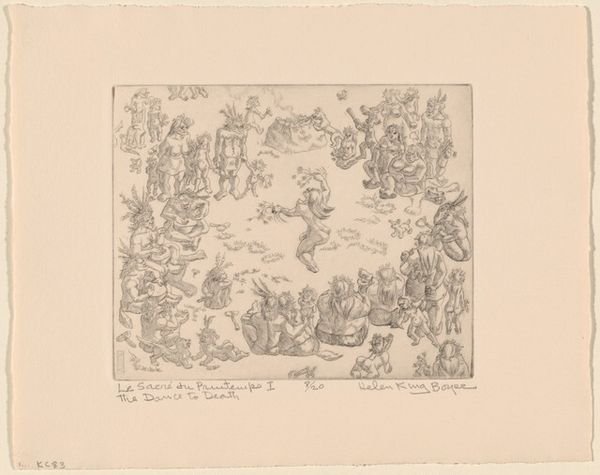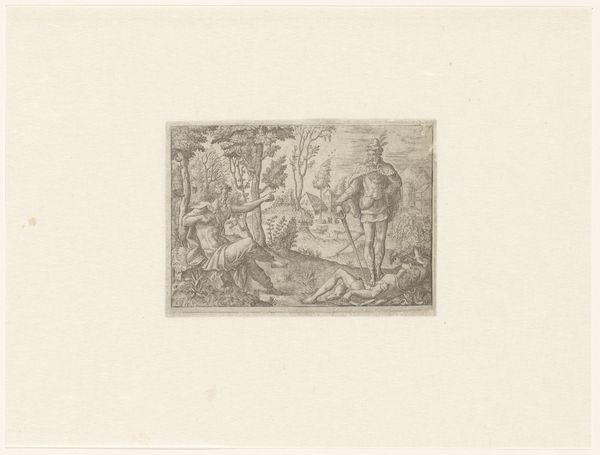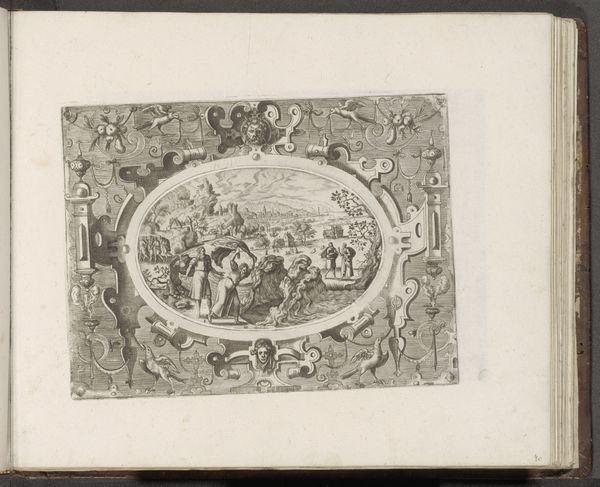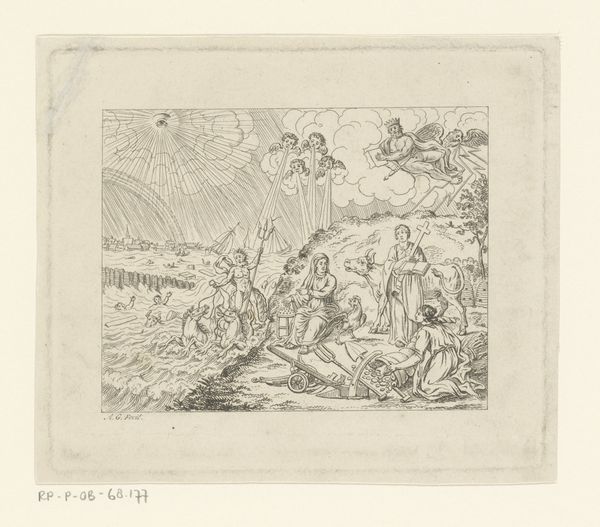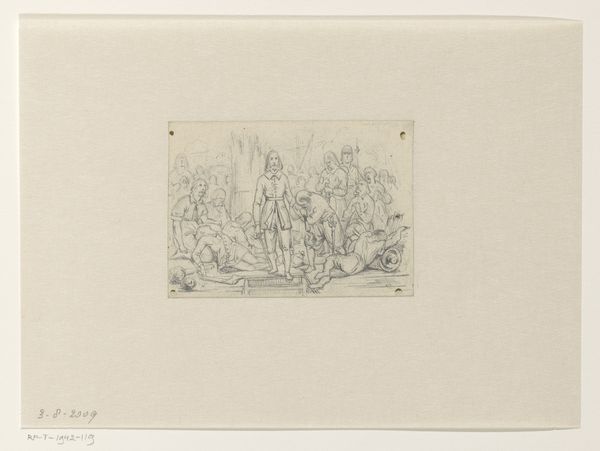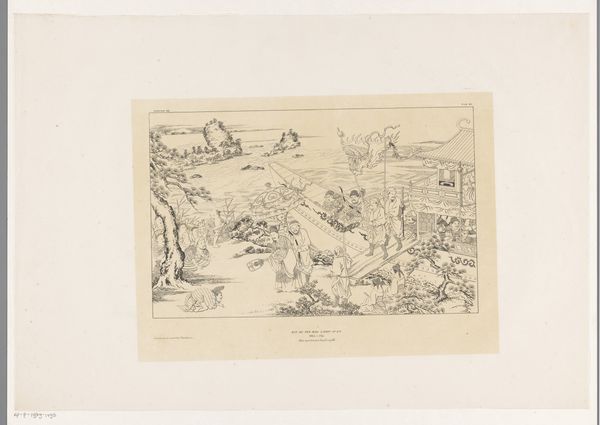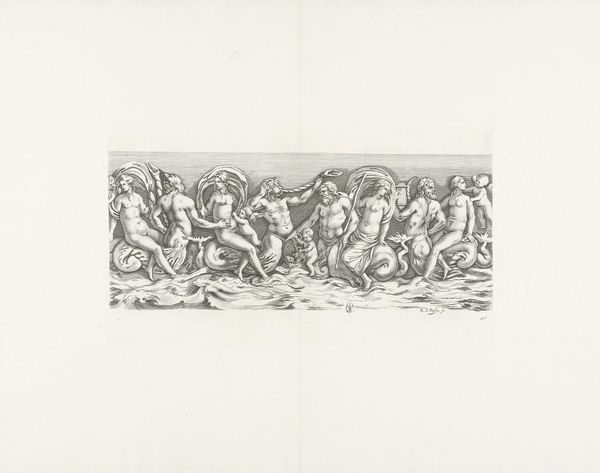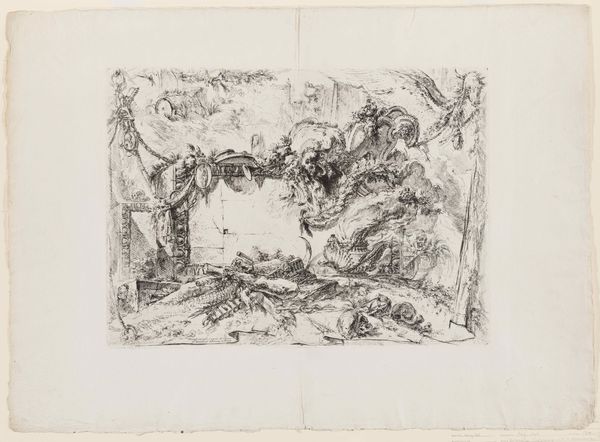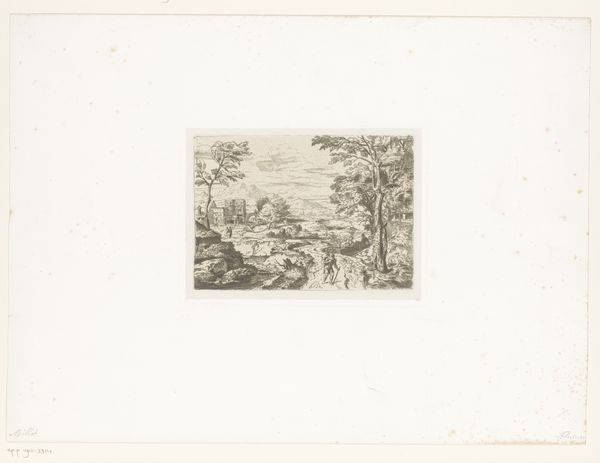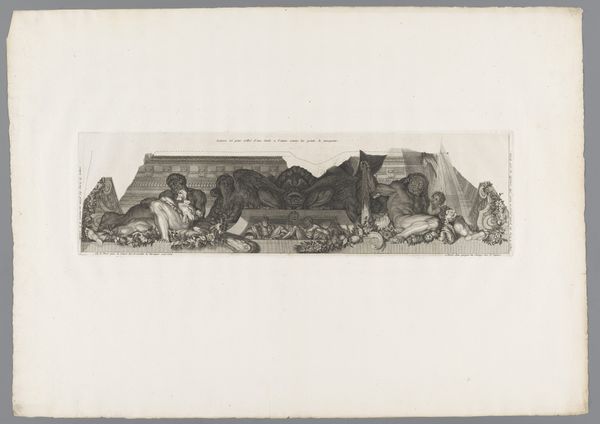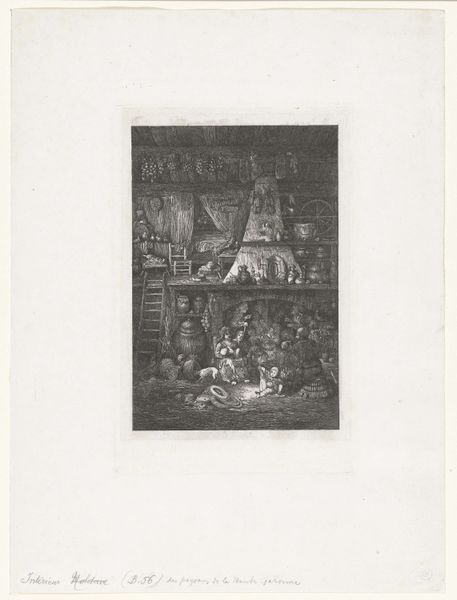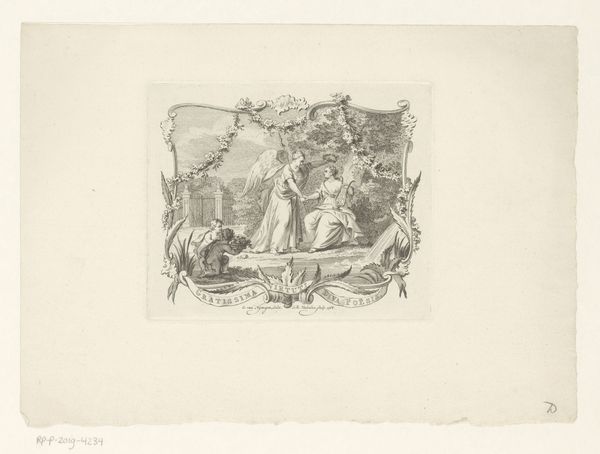
print, etching
# print
#
etching
#
landscape
#
etching
#
geometric
#
new-york-school
#
abstraction
#
united-states
#
cityscape
#
modernism
Dimensions: 7 x 9 in. (17.78 x 22.86 cm) (plate)13 1/2 x 15 7/16 in. (34.29 x 39.21 cm) (sheet)
Copyright: No Copyright - United States
Editor: So, this is John Marin's "Brooklyn Bridge and Lower New York" from 1913, an etching. It looks so turbulent, like the city itself is vibrating! The geometric forms and hatching make it feel unstable, almost chaotic. What's your perspective on this work? Curator: It's crucial to recognize Marin's etching not just as a representation, but as a product of its time. Think about the labor involved in etching itself. Acid biting into the metal, a repetitive, almost industrial process, mirroring the urban development occurring rapidly in New York. How do you see this material connection reflected in the work's subject? Editor: Well, the jagged lines could represent the construction and constant change. The way he's broken down the bridge and the skyline, maybe it's reflecting the disruption industrialization caused. It makes me wonder about who this kind of development really benefited. Curator: Exactly! And consider the availability of such prints. Etchings allowed for multiple, affordable copies, circulating this vision of a modernizing city to a wider audience. Who had access to art, and whose labor created it? It prompts us to consider how this imagery played a role in shaping perceptions of progress, obscuring potential downsides. Does the image feel celebratory or critical to you? Editor: I think it's more ambiguous now. I initially read it as simply dynamic, but thinking about the etching process and the social changes… it feels more complex. The energy could represent opportunity but also exploitation. Curator: Precisely. Examining the material and means of production invites us to consider the socioeconomic context interwoven with the art object itself. The etching isn't just about the bridge; it’s about the processes that built the bridge and the society it helped shape. Editor: That's a totally different way to appreciate the work – considering not just *what* it depicts but *how* and *why* it was made. I'll never look at an etching the same way.
Comments
minneapolisinstituteofart almost 2 years ago
⋮
Trained as both an architect and an artist, John Marin made his first etchings in 1905, while studying in Paris. Though his early efforts were mainly romantic views of European cities and landmarks, Marin increasingly came under the influence of Cezanne and the Parisian avant-garde during his time there. Upon returning to America in 1911, he was captivated by the vitality and rhythm of the fast-changing New York metropolis, especially its many new skyscrapers. He created his first views of the Brooklyn Bridge and lower Manhattan that year, returning to the subject with this etching in 1913—the same year that the International Exhibition of Modern Art (Armory Show) opened in lower Manhattan and introduced modernism to many Americans.
Join the conversation
Join millions of artists and users on Artera today and experience the ultimate creative platform.
